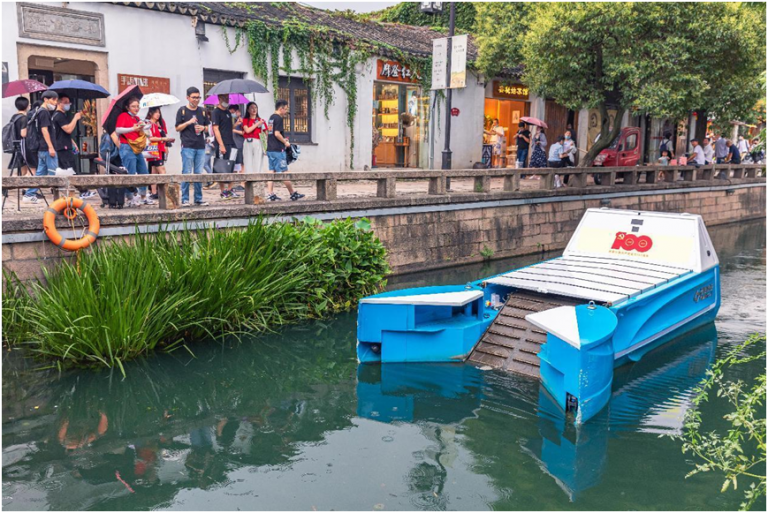
By Kang Pu
Clean energy, such as hydrogen fuel, liquefied natural gas and methyl alcohol, is gradually replacing traditional fuels as a primary power source for vessels, offering a new alternative for the navigation industry amid the global green and low-carbon transition.
Yangtze River Three Gorges 1, the world’s largest electric cruise with the highest battery capacity, completed its maiden voyage earlier this year.
The China-made electric ship is 100 meters in length and 16.3 meters in width, and as high as a four-storey building, said Zhang Yu, business manager of the technology management department of Three Gorges Electric Energy Co., Ltd. under China Three Gorges Corp, one of the co-developers of the vessel.
“It is powered by 7500 KWH power battery from CATL, which is comparable to the total battery capacity of more than 100 electric cars. All power-related parts of the vessel are domestically produced,” Zhang said.
The battery-powered vessel is free from the annoying noises and smell generated by diesel engines. It is also steadier due to the absence of engine vibration.
“The battery is powered by the clean hydroelectric electricity generated by the Three Gorges Dam, which helps save 530 tons of fuel and will account for a reduction of 1,660 tons of emissions each year,” the business manager noted.
Since its maiden voyage in March this year, the vessel has carried around 30,000 passengers on over 40 trips.

The first 49,900-ton methanol-powered dual-fuel chemical tanker built by Chinese company Guangzhou Shipyard International was recently delivered in Guangzhou, south China’s Guangdong province. It is the first methanol-powered dual-fuel tanker constructed in China.
“It adopts a methanol-powered dual-fuel power system and can operate in any of the four fuel modes — fuel oil, fuel hydrate, methanol, and methanol hydrate,” introduced He Guangwei, deputy chief engineer of Guangzhou Shipyard International.
According to him, the ship can reduce up to 75 percent of carbon emissions, 15 percent of nitrogen emissions, and 99 percent of sulfur and particulate emissions.
The wide application of clean energy in the ship making industry has resulted in more intelligent vessels. Complicated functions, such as autopilot and automatic operation, are now available on ships.
In Suzhou, east China’s Jiangsu province, unmanned cleaning boats are employed to remove floating weeds and garbage from waterways. To perform cleaning missions, sanitation workers don’t have to get on the rivers, and all they have to do is to dump the trash bins by the rivers, as unmanned cleaning boats would automatically clear river courses along preset routes. The boats can also return to charging stations automatically when the battery runs low.

“Two sanitation workers can keep 45 mu (3 hectares) of water areas clean by working eight hours a day, but our unmanned cleaning boats can clean 70 mu in 7.5 hours even if 98 percent of the water surface is covered by floating garbage,” said Zhu Jiannan, CEO of Orca Tech, the developer of the boat. The application of such boats can make sanitation missions safer and more efficient in extreme weathers, the CEO added.
China’s first autonomous 300TEU container ship “ZhiFei” was recently put into operation on a sea route between two ports in Qingdao, east China’s Shandong province. The diesel-electric hybrid vessel is equipped with an intelligent navigation system, with functions including independent route planning, collision avoidance, and remotely controlled navigation.
It can also be connected to shore-based production, services, controlling and monitoring facilities, including ports, navigation, and marine affairs offices, as well as navigation support departments, through 5G network and satellite communication, said Jiang Haiying, chairman of Navigation Brilliance, a Qingdao-based smart ship technology company and one of the vessel’s developers.
“It’s an inevitable trend in the navigation industry to make vessels more intelligent and finally achieve unattended operation. As breakthroughs are made in cloud computing, artificial intelligence, and big data, some key technologies are being developed and improved,” Jiang said.
The development of smart navigation will draw more Chinese enterprises into the blue sea of intelligent ship making.










